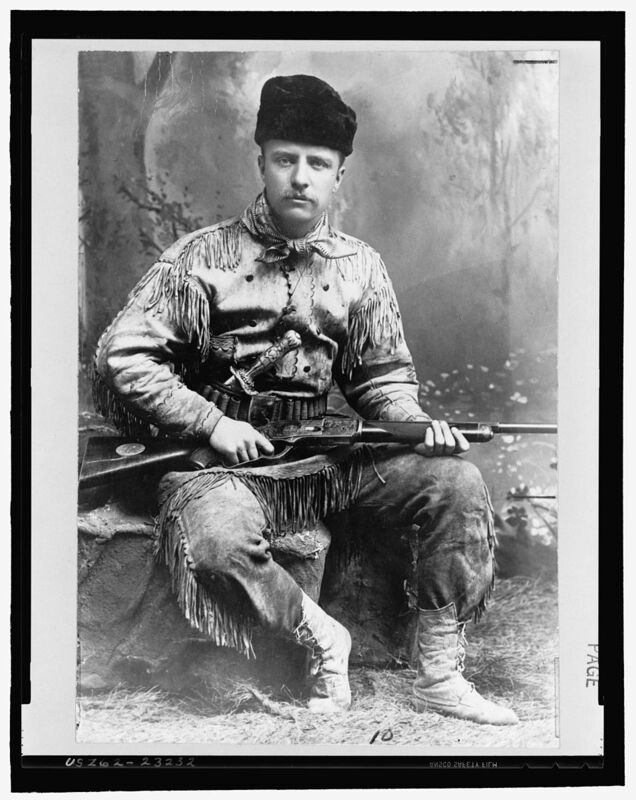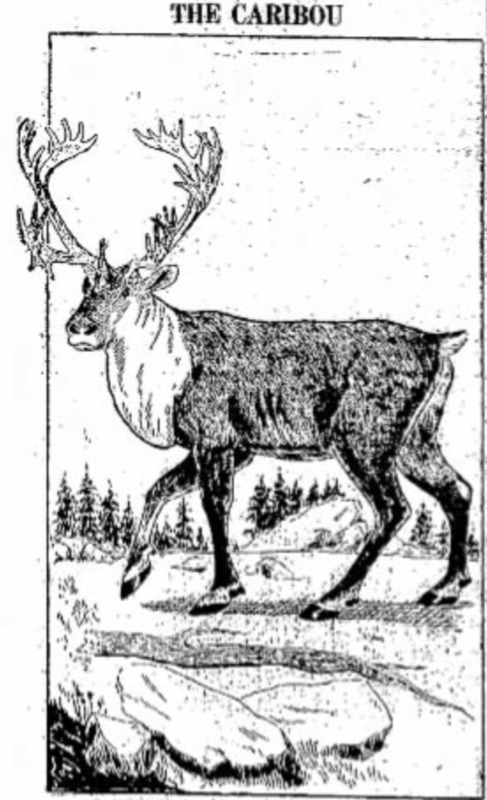Etymology & Extracts
ETYMOLOGY.
caribou, n. A reindeer belonging to any of several subspecies found in North America; esp. the migratory Rangifer tarandus groenlandicus. The world’s Caribou and Reindeer are classified as a single species Rangifer tarandus. Reindeer is the European name for the species while in North America, the species is known as Caribou (IUCN 2021). etymology: <French caribou (1609) < Micmac qaripu, earlier form of qalipu (pronounced /xalibu/, cognate with Maliseet-Passamaquoddy mokalip caribou: see maccarib n.), reflecting an agent noun of an Algonquian verb with the sense ‘to shovel snow, to clear away snow’ (compare Ojibwa mangaanibii he shovels snow), so called on account of the animal’s habit of scraping away snow to feed on the vegetation underneath. “Caribou.” Oxford English Dictionary
1 2 The Indigenous names for caribou listed here are sourced from The First Peoples’ Cultural Council through www.firstvoices.com.
3uqausiit: The Inuktut Grammar Dictionary, https://uqausiit.ca/.
| naxni,1 | Ktunaxa/Kootenai. |
| vadzaih,2 | Vuntut Gwich’in. |
| tuktu,3 | Inuktitut. |
| qualipu,4 | Mi’kmaq. |
| caribou, | French. |
| caribou, | English. |
| karibu, | German. |
| boazu (domesticated), goddi (wild), | Northern Sámi. |
| се́верный оле́нь, | Russian. |
| hreinn, | Old Norse. |
| hrán, | Anglo-Saxon. |
| rangifer tarandus caribou, | binomial/International Code of Zoological Nomenclature. |
- 1 2 The Indigenous names for caribou listed here are sourced from The First Peoples’ Cultural Council through www.firstvoices.com.”
- 3uqausiit: The Inuktut Grammar Dictionary, https://uqausiit.ca/.
- 4www.mikmaqonline.org.”
EXTRACTS.
In the afternoon on one of the dry shoals of the River [near present day Revelstoke] we came to a herd of eight Rein Deer, they were not shy, and we shot a good Doe, and might have killed two, or three more. The hunters often mentioned to me that they had seen Rein Deer, but I doubted if they were of the same species that is found around Hudson's Bay and the interior country; upon examination I found no difference: the question is from whence do they come, as they are not known in any part of these countries except in the vicinity of the Canoe River, by the head of which they probably have a pass to the east side of the Mountains.
Tarandus Furcifer, Agassiz. Caribou Or American Rein-Deer. Males. 1. Summer pelage. 2. Winter pelage.
James Audubon and John Bachman, The Viviparous Quadrupeds of North America (1847)
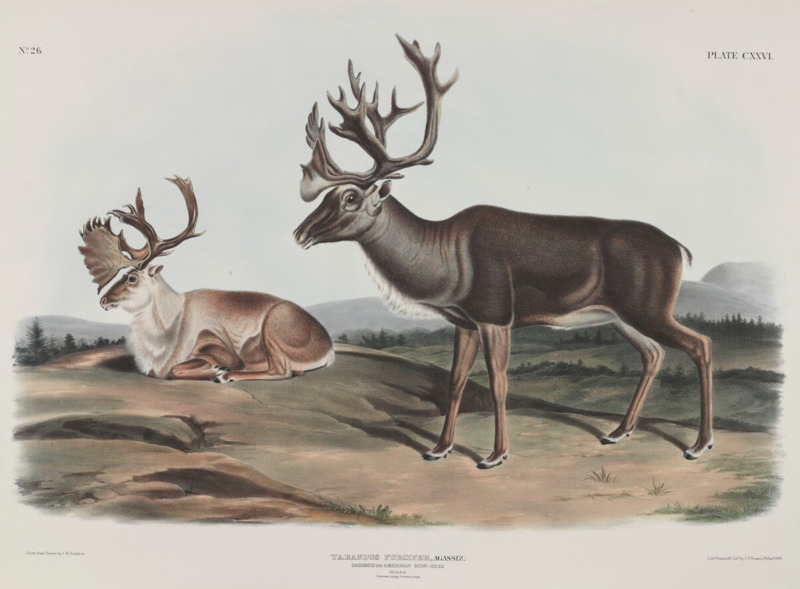
On the 11nth we continued our route at early dawn [Columbia River, likely near present day Northport] — the mountain scenery was hidden from our view, wrapped up in dense mist and fog, which were seen ascending in dense pillars, adding to the forming clouds above till the whole sky was overcast. Occasionally, as if to break upon the unusual monotony, would a fallow or reindeer be observed on the margin of the stream, or peeping with uplifted ears from a thicket, as the strange sound of oars or the Canadian song came stealing louder and louder upon them in their quiet abode — off they bounded, affrighted at the sight of men, so hateful, it appears, to the wild and timid creatures of the forest. In the course of this day we ran the place called the Little Dalles, and in the evening we encamped at the entrance of the Upper Lake.
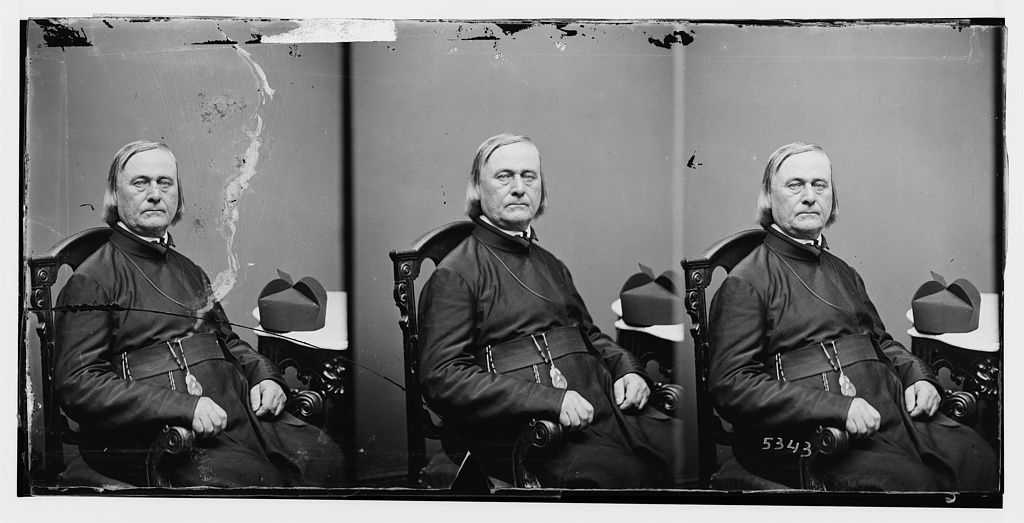
Just after he left, we saw the Doctor’s party returning, as they drew near, we could see that they had improvised flags fluttering with a triumphant air on their canvass boat. Some one suggested caribou! and a rush was made for the landing. Sure enough! they had killed a fine cow with a beautiful head, the horns still in the velvet. Dr. Merriam gave us an interesting description, in the evening as we sat around our campfire, how he and Sutton followed the herd of caribou many weary miles over the steep hills before they succeeded in killing one.
A caribou has an enormous foot, bigger than a cow's, and admirably adapted for travelling over snow or bogs; hence they can pass through places where the long slender hoofs of moose or deer, or the rounded hoofs of elk, would let their owners sink at once; and they are very difficult to kill by following on snow-shoes a method much in vogue among the brutal game butchers for slaughtering the more helpless animals. Spreading out his great hoofs, and bending his legs till he walks almost on the joints, a caribou will travel swiftly over a crust through which a moose breaks at every stride, or through deep snow in which a deer cannot flounder fifty yards. Usually he trots; but when pressed he will spring awkwardly along, leaving tracks in the snow almost exactly like magnified imprints of those of a great rabbit, the long marks of the two hind legs forming an angle with each other, while the forefeet make a large point almost between.
Here on the woody shores of lake Isocquet [Priest Lake], breathing the balmy odor of the pines, Judge Henry A. Gildersleeve and a large party of prominent New York sportsmen, came and spent several weeks immediately after the Northern Pacific railroad was completed. The party consisted of Colonel Rodney C. Ward, a celebrated fisherman, a German baron and other equally well known New Yorkers...The party had magnificent sport, and had the finest camp ever pitched in this country. It is said to have cost them over $1000 each. The spot selected was on the old Indian highway, used away back in the Hudson Bay Company’s time. The German baron left the part after a few weeks, and with an Indian guide pushed back in the mountains to the northwest, and succeeded in killing nine or ten caribou.
Looking up from where I was kneeling by the fire, I was temporarily blinded by a sudden skift of smoke. When my vision cleared enough to see, I made out the shape of the strangest, most frightening animal I had ever seen coming out of the woods. Rubbing my eyes and forgetting the heaping skillet of birds sizzling over the fire, I tried to get a better look. Without actually seeing him, I was aware that Pelke had picked up his rifle and moved over by me. Touching my arm, he whispered hoarsely, 'What in the world is it?'
Guns ready, Pelke with his rifle and me with my trusty mouser, we watched the twisted figure make its way slowly toward our camp. After an agonizing wait, I suddenly realized that is was a human being entirely clad in caribou hides. Even a headpiece, which covered most his face as well, was made of stiff hide. Rising to my feet, I placed a restraining hand on Pelke’s shoulder. 'Hold fire,' I said softly. 'It’s a man and he desperately needs our help.'
Slipping my pistol back in its holster in one quick motion, I rushed forward to help the awesome stranger. My sudden movement frightened him and he made as if to run, then too far gone to make a go of it, stopped. 'Don’t shoot,' he cried in a faltering, weak voice, 'I’m Billy Houston.'
Mr. Butter of Faskally has had a very successful trip to the Rocky Mountains and the Selkirks, killing 11 caribou, 5 bighorn or Rocky Mountain sheep, 5 Rocky Mountain goats, besides deer. All the heads are very fine ones. One caribou head has 39 points, and is believed to be the largest ever killed. Mr. Butter also had the good luck to kill an Albino caribou, an animal which is extremely rare.
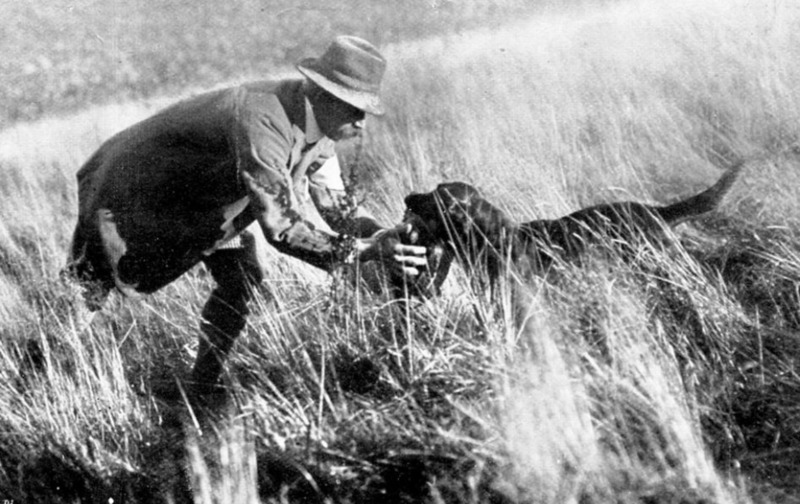
Of the woodland caribou a few are found in Maine, though it is not lawful to kill them, but they may be hunted in Newfoundlands, New Brunswich, Quebec, Nova Scotia, Cape Breton, Manitoba, Northern Canada, Minnesota, Northern Idaho, Washington, and then to Northern Alaska. If they are found in New Hampshire, Michigan, or North Dakota it is unlawful to kill them.
Oliver Hall and John Lloyd returned Sunday from a hunting trip to the almost inaccessible mountain country at the head of Sullivan Creek, in the extreme northeastern corner of the state of Washington, into what is known as the Caribou country. The weather was too warm and bright for good hunting, snow, which was needed, being still in the sky. They were well repaid, however, by the killing of two caribou, both falling to the prowess of Mr. Lloyd. One or two deer were secured. The head and horns of the caribou were brought out and are being mounted. So rough are the trails that the valuable trophies could not be trusted to pack horses, as they often 'rolled' in bad places and would smash them. It was necessary to carry them man-back the entire 45 miles to the Pend d’Orielle river at Hall’s ranch.
Fred Fisher opened the bar, which featured the iconic Bonners Ferry white caribou, on Main Street in 1905, and ran it until it closed four years later in 1909.
Boundary County Historical Society
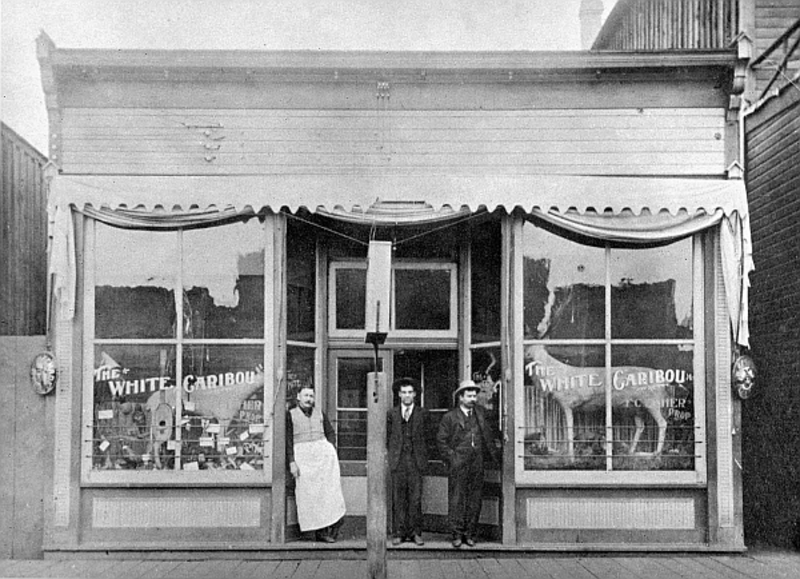
The Mountain Caribou, with its races, is easily distinguished by its great size, and dark or even black general colour. Otherwise, it is of Caribou style and pattern.
Size. It stands 46 1/2 in. (1179 mm.) high at the withers; is 95 in. (2409 mm.) from tip of the nose to root of the tail; the tail is 5 in. (127 mm.) long; the head from nose to occiput is 19 3/4 in. (500 mm.); the hind foot, 26 in. (659 mm); the ear, 7 1/2 in. (190 mm.).
Weight. There are no exact figures available, but all hunters agree that it is nearly double the weight of the Woodland species, the bulls reaching commonly 500 to 600 lbs. alive.
Colour. The general colour is a deep umber brown, very glossy, and darkening nearly to black on the lower parts of the legs. The neck is dull grayish white, also the underside of the tail, the buttocks, lips, and belly. Along the ribs on each side is a grayish patch a little lighter than the surrounding brown. The white fringe above each hoof is shining white, and very narrow.
The caribou or American Reindeer is very scarce in the United States and is in more imminent danger of becoming extinct than any of our other game animals. I only know of one herd in our country and that herd is located in Northwest Montana. The Caribou here illustrated is sometimes known as the Woodland Caribou and is about the size of our Elk. This animal has a large head upon which grows irregular antlers, which they shed in the Springtime. A 'shovel horn' grows out of one antler down from between the eyes toward the nose, and the Caribou uses this 'shovel horn' to push snow off the moss upon which he feeds. This animal is a 'trotter' like the Moose, and while not as swift on foot as the Moose, yet he is a fast traveler. Not being as wary or possessed of the same animal smartness as the Virgin Deer or the Moose, he more easily becomes the victim of hunters and wild animals than they, and consequently has entirely disappeared from much of his one-time range.
Montana’s deep timbered Kootenai country, plus a small slice of northern Idaho, is credited by the last fish and wildlife service report with having the nation’s only herd of caribou. The existence of caribou in Montana is a surprise to many sportsmen who think they are well informed on big game in the state, but the state’s outdoorsmen take pride in the diversity of big game within Montana’s borders. Just when these magnificent animals were first seen by white men isn’t recorded and probably never will be, but a number of old timers in the Yaak Valley of northern Lincoln county knew about the caribou. They had seen them sliding like big antlered ghosts among the trees, and some even mistook them for elk, unwilling to believe that there could be caribou in Montana.
First known photograph of Upper Priest Lake from The Diary of our Trip to E-Soc-Quet by One of the Party (1887). Shedroof Mountain and the future South Selkirk caribou critical habitat loom in the distant background.

Sometime during the 1954 deer season, Mr. Harold McNally of Bonners Ferry, told me he was certain that he had seen a caribou standing in the cemetery at Moravia, four miles south of Bonners Ferry. McNally, it should be remembered, has two mounted caribou head in his bank and should be familiar with what a caribou looks like.
In tracking these two caribou we found that snow depths meant nothing to them as they would move freely wherever they wished. In going downhill they would plunge from one spot to the next, with never a mark in between. At no time did they wallow through the snow. One of them, on two occasions, went under very low-hanging spruce boughs without molesting the snow thereon. When I moved the limb, the snow would cascade off and yet a caribou had gone under it as the tracks indicated. There were no belly trails to indicate the animal had crawled and yet it appeared to be an impossibility for an animal to have moved the boughs without disloding the snow.
High in the spruce forests of northwestern Idaho’s Selkirks ranges a forgotten animal, just a rumor, a conversation piece around the campfire for the last three or four decades. It’s the mountain caribou, once a fairly important game animal across the Inland Empire, ranging as far south as Elk City, Idaho. But the cousin of the famous Barren Ground caribou of the frozen north is a wilderness animal, taking the rich mosses and lichens from the virgin spruce. Over the years, rumors reached game biologists that hunters had seen a funny looking elk, an unusually big deer, an animal they couldn’t identify.
It took an Idaho game conservation officer and a man who hunts with his rifle and his camera to substantiate the rumors and make the caribou once again a part of the Inland Empire’s story. Paul Flinn is the conservationist who worked three long years and wore out a couple of pairs of snowshoes to make Bonners Ferry the 'caribou capital of the Inland Empire.' Flinn talked it up, Harold Buroker, the town’s water and light department manager, backed up Flinn with a camera and a couple more pairs of thread-bare snowshoes. The two men, when they had some spare time, were on the crowns of the Selkirks’ 7000-foot high peaks, chasing the animals. They talked with trappers, loggers, men who had hunted the caribou in the 1890s, Indians who tanned the leather of the caribou...
They learned the caribou can run in nine feet of snow and never stumble and never sink into the snow more than eight or nine inches while a man on snowshoes settles down well over his boot tops...He started measuring footprints. No wonder they could run into the snow: their feet measured nine inches from dew claws to hoof front and up to six inches across. Built-in snowshoes. He learned the caribou feed on 'the old man’s beard' moss, hanging from the spruce trees. Their diet consists also of tender spruce bough tips and much to Flinn’s surprise, the animals relish grease dropped from machinery used in the logging areas. Loggers have told Flinn and Buroker they’ve caught animals atop bulldozers and jamming equipment, trying to lick out the grease cups.
Canadian wildlife authorities told Flinn they believe the Idaho caribou is the southern-most group of the species now. For Flinn, it’s only the beginning on the project of finding out about his caribou charges. There’s a study plan mapped for the next couple of seasons: Do they bear calves annually? How Many? Are they on the increase? Would the cutting of spruce forests mean the end of the Idaho herds? What’s their migration route and how far does it extend and in which directions?
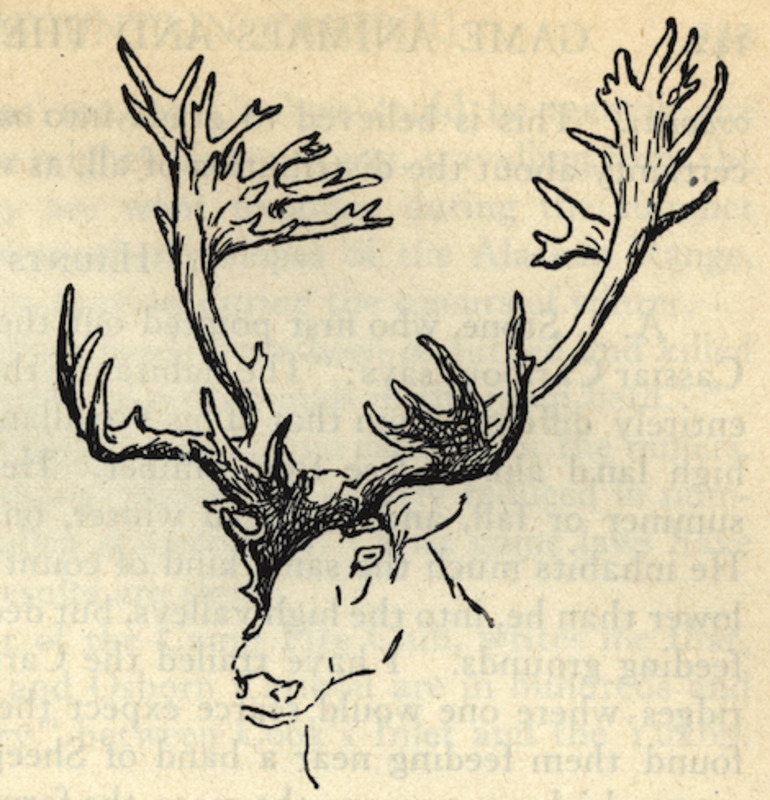
The last remnants of a once great and magnificent wildlife herd, the rare Selkirk Mountain caribou, may now be in the fade-out chapter of their species history, their doom sealed because man did not take their needs into consideration in determining what he would do in the caribou’s natural environment. To a degree, we all share the guilt of destroying the migrating caribou’s habitat. Concern about the survival of this particular species of caribou is due to the threat of construction of logging roads, logging itself, road kills, illegal hunting, human harassment and fires...Now the Selkirk Mountain caribou, called one of the 'most fragile members of wilderness environments,' is being studied through a University of Idaho research project funded by several game management agencies and conservation organizations. Hopefully the study will provide information us professional land managers should have sought years ago and enable intelligent decisions that might help reverse the trend toward destruction of the species in the contiguous United States...At least two post-graduate students, David J. Freddy and Gary J. Schroeder, are expected to continue research on possible management options for the Selkirk Mountain caribou, probably through the fall.
When a sacred animal was killed, its spirit went to a spirit house. For the Neskapi this was Caribou House. Caribou House was a real place. It lay in a mountain range west of Ungava Bay in present-day Quebec. The mountains there were white, not from ice or snow but from centuries of caribou hair falling on the ground. The caribou entered and left this place each year, passing through a valley between two high mountains. The caribou hair on the ground was several feet deep and for miles around the cast-off caribou antlers formed a layer as high as a man’s waist. The caribou paths were worn so deep a calf going along one would only show his head...The Animal Master lived at Caribou House, together with the living caribou and the spirits of slain caribou.

Rare trophy antlers from a mountain caribou shot by an Idaho hunter in 1892 have been stolen from a cabin north of Priest River. Vandals who accessed the cabin by snowmobile in December smashed the old head mount and packed off the antlers, which had been considered special enough to tour in the Idaho exhibit to the 1893 Chicago World’s Fair. Selkirk Mountain’s caribou are the nation’s rarest mammal. The handful that still exist are protected by the Endangered Species Act. In the 1800s, however, they were fair game, although they were a virtually inaccessible trophy for anyone but the most determined hunters in this region. J.M. Jeannot, a businessman in Hope, teamed with a friend in October 1892 and vowed to explore high in the Pack River drainage until they found the elusive caribou. They went as far as possible by horse, and then even higher by foot until they found an area he described in a newspaper story as pounded by so many tracks it 'looked like a Texas roundup.' He eventually shot two bulls, the largest of which he estimated at 600 pounds. He had the head mounted and showed it off on the walls of his Hotel Office Saloon in Hope [Idaho]. When it came to a Spokane sport shop on Riverside Avenue, a newspaper clipping dubbed it 'one of the largest pair of caribou antlers ever seen in Spokane.' While the antlers were likely the biggest from a caribou ever taken by a hunter in Idaho, Western caribou were never given a trophy category by the Boone and Crockett Club because their antlers don’t grow to the trophy proportions of their eastern Canada cousins...
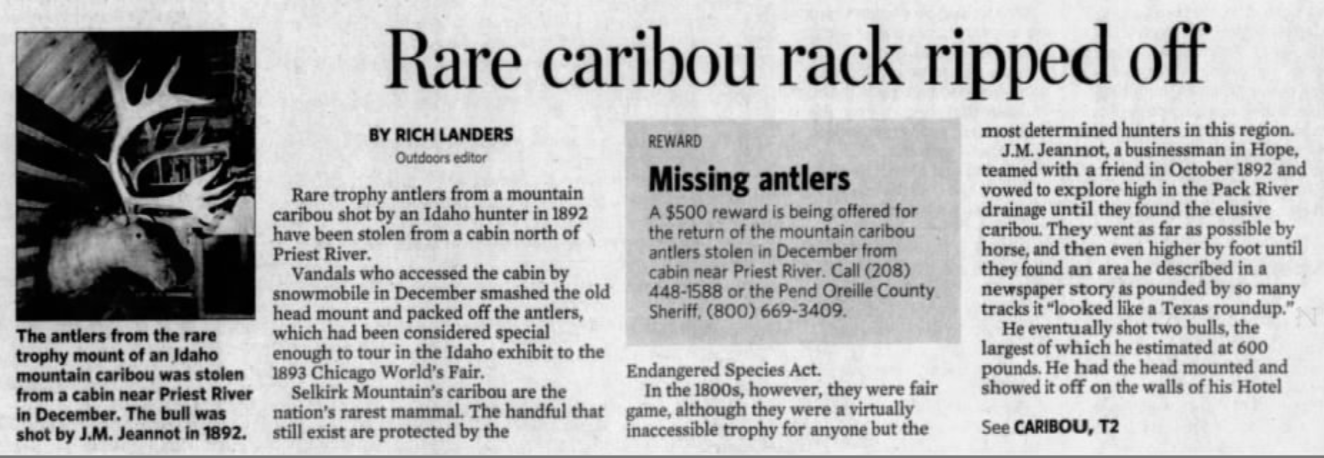
In short, if my argument is valid, then true woodland caribou are only the very few, dark, small-manned caribou scattered across the south of caribou distribution. They need the most urgent of attention.
A reindeer engraved on the wall of a cave in south Wales has been confirmed as the oldest known rock art in Britain.
Snowmobile trails provide hard packed travel corridors for predators to move into the alpine (Bloomfield 1979, Neumann & Merriam 1972). Although there is normally minimal overlap between wolf and caribou winter ranges, these trail networks allow easy access to alpine and forested winter range areas, potentially increasing predation rates on caribou and upsetting the delicate predator/prey relationship so critically relevant to conservation strategies for woodland caribou.
My girlfriend and I, meanwhile, were out trying to forge a path to Harrison peak. I had heard you can make your way there from the Two Mouth lakes, though there seemed to be no trails. It ended up being farther than it seemed, and we climbed a closer one which we at first thought was Harrison peak. A warning if you attempt this, the brush is tall, ranging from knee to chest height. Coming up the side of the peak, we got to a small unnamed lake (which you can see on google maps) that has another granite peak directly behind it. Beautiful. Ate lunch there and climbed our original goal, the slightly smaller peak to the right, yielding an excellent view of the two mouth lakes and the stream that connects them. I will say it definitely felt more wild somehow, than down by the Two Mouth lakes. I thought I glimpsed and heard an animal when we first approached the unnamed lake, and when we went out of sight ascending the peak, we both clearly heard something large and probably hooved stomping about in the lake. This is the last forest in the continental US with caribou, I wonder if it was one of those.
They’re shadows.



